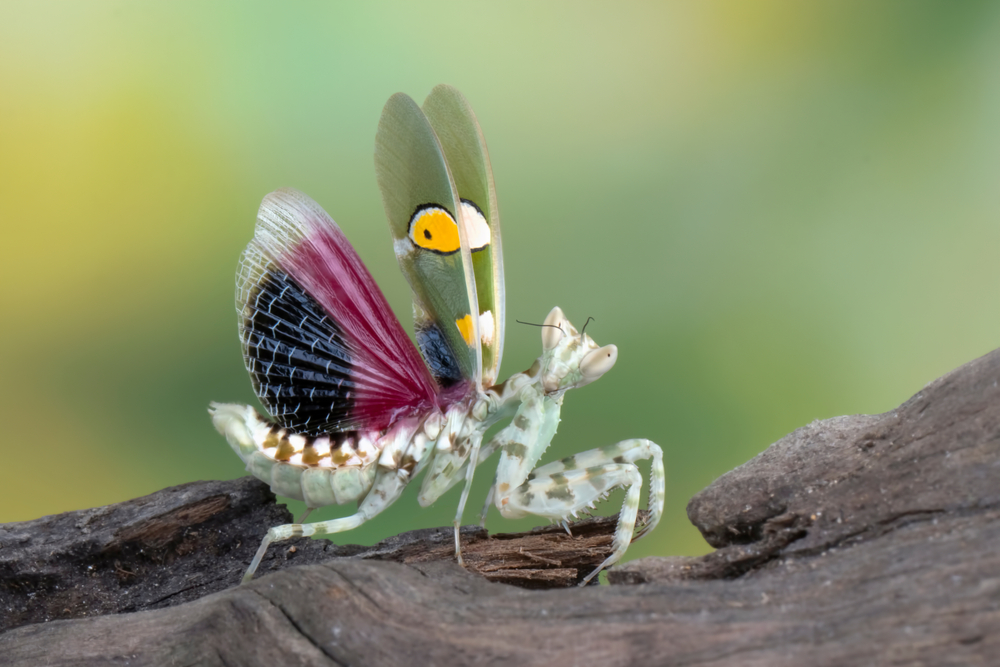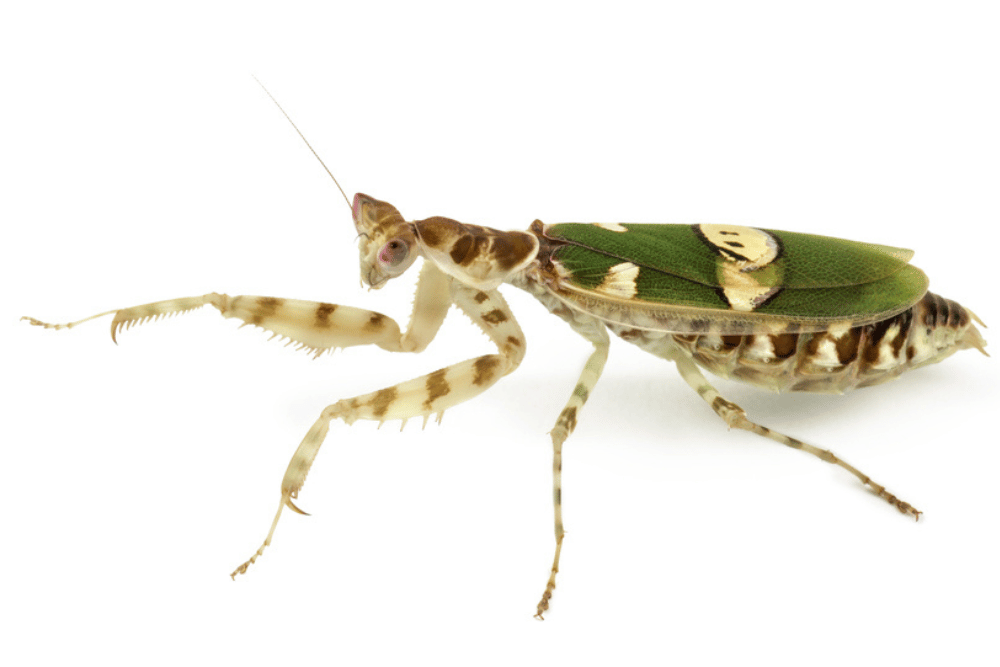
The Jeweled Flower Mantis (Scientific Name: Creobroter Gemmatus) is a small to medium-sized praying mantis species, with adults reaching lengths of up to about 1.5 inches. Females tend to be slightly larger than males.
Both genders display a light green base color, which helps them blend in with the surrounding vegetation. Their bodies and legs are also adorned with brownish bands, further enhancing their camouflage. On each wing, they have two yellow eye spots with black borders, which can serve as a defense mechanism to startle predators. The inner wings, which are not always visible, have additional eye spots – one in magenta and another in deep blue.
The patterns and coloration on the body of the Jeweled Flower Mantis closely resemble those of flowering plants, enabling them to blend seamlessly with their surroundings. This adaptation is crucial for their survival, as it allows them to avoid predators and ambush prey effectively.
Like all mantises, the Jeweled Flower Mantis has two antennae, which they use for sensing their environment and detecting prey. They also have six legs, with the four rear legs primarily used for mobility, walking, and holding onto branches or leaves. The front two legs are specialized for capturing and holding prey.
The combination of their unique coloration, patterns, and physical adaptations make the Jeweled Flower Mantis a remarkable and fascinating species, both in terms of appearance and behavior.
The Jeweled Flower Mantis has a wide distribution across East, Southeast, and South Asia. Within this region, countries such as Malaysia, Indonesia, Thailand, Vietnam, India, and China provide suitable habitats for these mantises. They thrive in areas with high humidity, which is typical of evergreen forests and subtropical or tropical forests.
These forests offer abundant flowers and shrubs, which are essential for the Jeweled Flower Mantis’s survival. The lush vegetation not only provides ideal hiding spots for these mantises to blend in and avoid predators, but it also attracts a wide variety of insects, which serve as their primary food sources.
In these environments, the Jeweled Flower Mantis can be found perched on leaves, branches, or flowers, where they patiently wait for their prey. They are known to be primarily diurnal, being most active during the day. It’s essential for their habitat to maintain adequate levels of temperature and humidity, as these factors significantly influence the mantis’s overall health and wellbeing.

See more at
CritterFacts:



